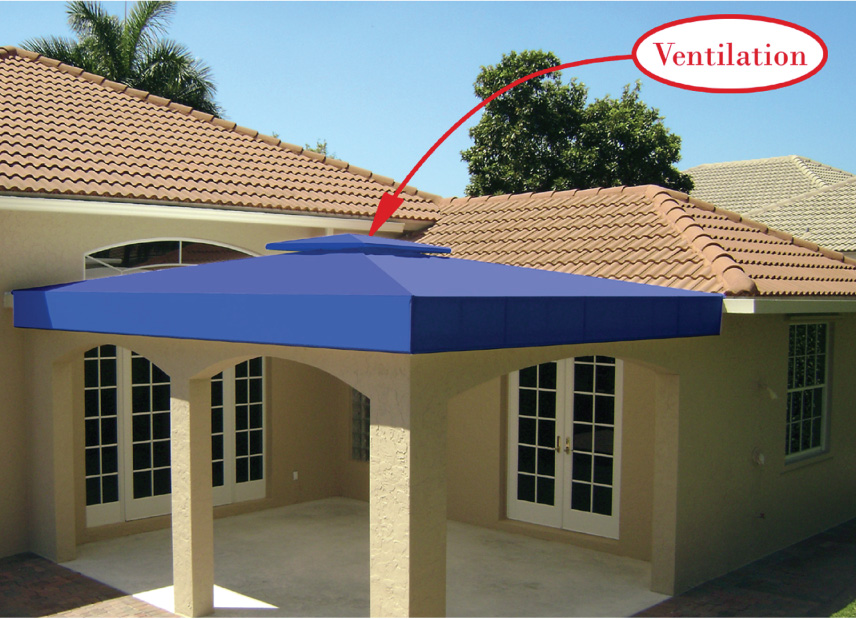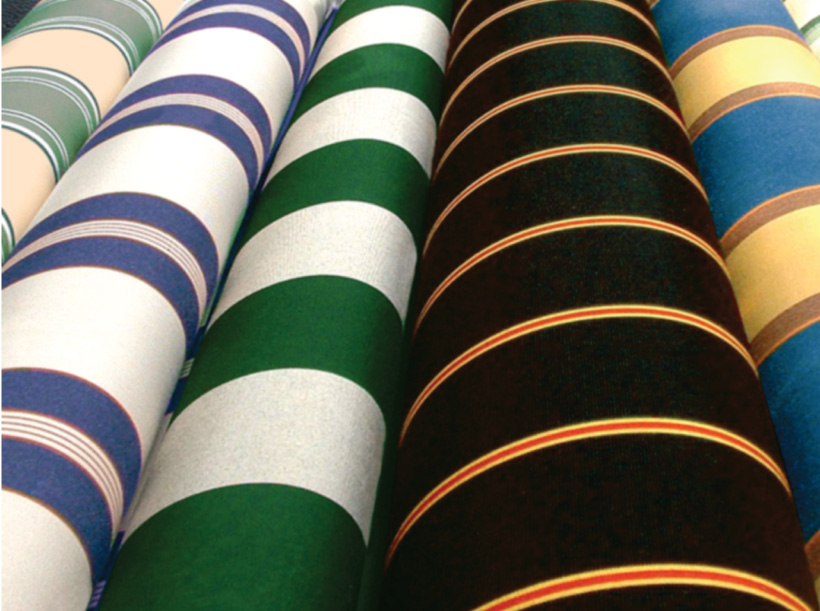IV. Fabric
|
Fabric is available in many styles and colors
|
Awning fabrics are available in many colors and patterns from a variety of manufacturers. With advances made in the synthetic fabric market along with improved dying techniques, today’s fabrics can retain their shape and good looks for many years. There are two basic types of fabric used in the awning industry today, canvas and vinyl.
A. Canvas
Today’s canvas is actually made of woven acrylic fibers and has a soft feel and look, similar to cotton canvas. Canvas comes in a greater variety of patterns and colors than vinyl does. It is regarded as an upscale fabric and just like vinyl, has its advantages and disadvantages. Canvas is breathable, meaning that air can flow through the fabric, encouraging evaporation of rainwater and condensation which results in cooler temperatures under the awning. Canvas is certified to be water resistant rather than waterproof. The fact that it is breathable material does not mean that water flows through it, but in a heavy rain you may experience an occasional drip. The solution dying process is done while the acrylic is in a liquid state so that the color becomes an integral part of the fabric. Sunbrella is one of the best known manufacturers of acrylics with over 150 styles and colors to choose from and they are quality products, but there are many more suppliers with different variations of the canvas product. There are the same woven acrylic fabrics available with coatings applied that serve a particular purpose such as scuff resistance, fire retardance and increased resistance to water, mildew and UV rays.
B. Vinyl

Patio awning with roof vent
|
This is actually a fabric comprised of a polyester scrim, bonded on each side with a vinyl overlay. It is also commonly referred to as vinyl laminated polyester. This material is a strong, quick drying fabric that is waterproof and UV resistant. Vinyl is a dimensionally stable fabric that will not stretch, rot crack or mildew. However, vinyl does not allow air circulation through the fabric. This can result in heat buildup and condensation at the higher extents of your awning making your outdoor room uncomfortable. To remedy this condition, a vent can be added to your awning design. The vent is installed at the highest point of your awning and allows the hot air to escape while keeping the rain out. Vinyl is available in many colors and styles but the palette is not as broad as that of the canvas selections. Just as with canvas, there are manufacturers who supply vinyl with optional coatings that can enhance the look and performance of the product.
C. Variations
Although the materials most used for awnings fall into the above two categories, there are many variations in the looks and performance of both canvas and vinyl. Included in the choices are fabrics with different colors on each side, open weave style, backlit, screen mesh and many more. Coatings are added to fabrics which increase resistance to the sun, UV rays, water, scuffs and scratches and fire. There are many possibilities when choosing a fabric and your design estimator should be able to steer you to the right one for your job.


 View Background Photo
View Background Photo